Mysuru, the Cultural Capital of Karnataka and a home for some of the oldest and historical structures, is a known thing. But not many know that the city is also a home for some of the oldest markets. One such place is Old Santhepet bang behind Mothikhane Building on Sayyaji Rao Road. This market has been catering to the needs of the population for over two centuries. A home to some of traditional business houses started way back in 1920s, Santhepet has still retained its old charm that makes people to come here in droves and make a purchase. This Weekend Star Supplement traces Santhepet’s history, its marketonomics (market economics) and re-introduces readers to the marketplace so that they can have some nostalgic memories.
By S.N. Venkatnag Sobers
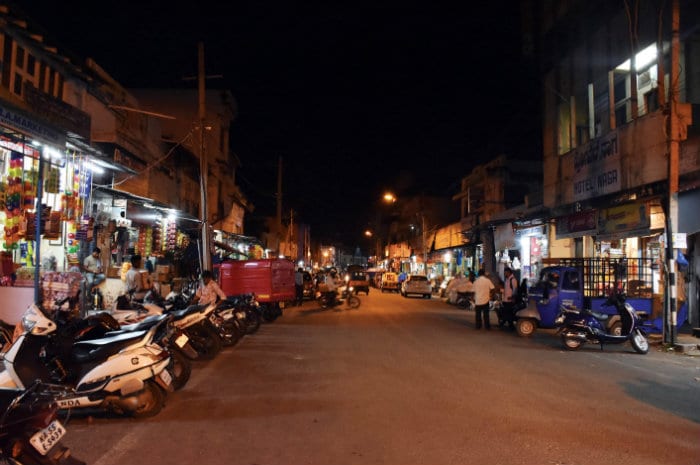
Getting a feel of Santhepet
Every story matters. Located in the heart of the city, Santhepet has a history of more than two centuries. What started as a tiny marketplace outside the erstwhile Mysore Palace Fort has now become the most visited market — a subsidiary market for Devaraja Market.
When compared to earlier days, there is not much activity during the early part of the day as majority of the wholesale shops have now become retail outlets that only open after 8 am. Earlier, Santhepet was a wholesale hub where merchants sold different varieties of red chillies, tamarind, rice, pulses, detergent powders, soaps and other household items.
It used to be open from early in the morning till late in the night. Earlier, the roads surrounding Santhepet were used to park trucks as merchants got goods from Tamil Nadu, Kerala and Andhra Pradesh. Now since the wholesale market is shifted to Bandipalya on Nanjangud Road, old Santhepet seems to have lost its charm. Most of the shops are retail outlets and there are others who sell fruit juice, fertilisers and books.
However, for people who are not aware of Old Santhepet, it is a must visit. One can get a feel of how a market works as still there are a few wholesale shops. Now, the market is lively only during business hours.
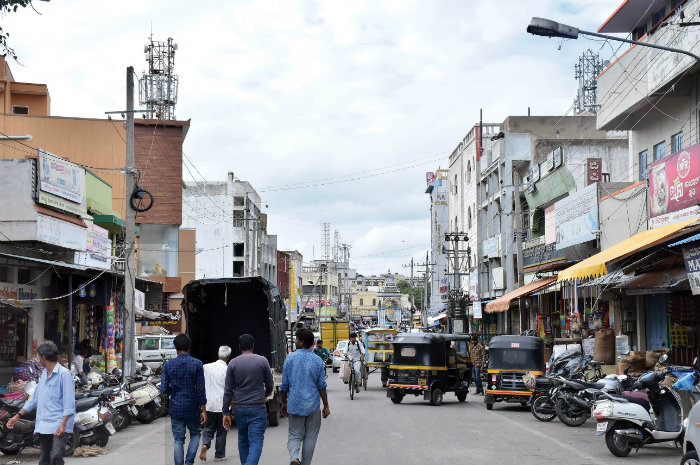
A community market
Earlier, the market was dominated by merchants belonging to Vyshya, Lingayat and Kunchetiga communities. While merchants of Vyshya community sold wholesale spices, coriander, red chillies, tamarind, Lingayats merchants sold rava items, rice and pulses, Kunchetigas mainly sold jaggery and onion. Now the market is flooded by Marwari traders who have set up all and sundry shops.
hile merchants of Vyshya community sold wholesale spices, coriander, red chillies, tamarind, Lingayats merchants sold rava items, rice and pulses, Kunchetigas mainly sold jaggery and onion. Now the market is flooded by Marwari traders who have set up all and sundry shops.
“The old market was located in two main streets, one opposite Jaganmohan Palace and the other on its adjacent road leading towards Devaraja Market. There were around 600 shops having loyal customers. If a customer comes here he/she would complete shopping at one single time,” said G. Shreyas of Ranganatha Traders, which earlier operated in Old Santhepet but now shifted to Bandipalya.
The Old Santhepet was a compact market that would deliver supplies as per demand. Goods were only unloaded late in the night. But now since the market was shifted to Bandipalya there are no trucks at Old Santhepet.
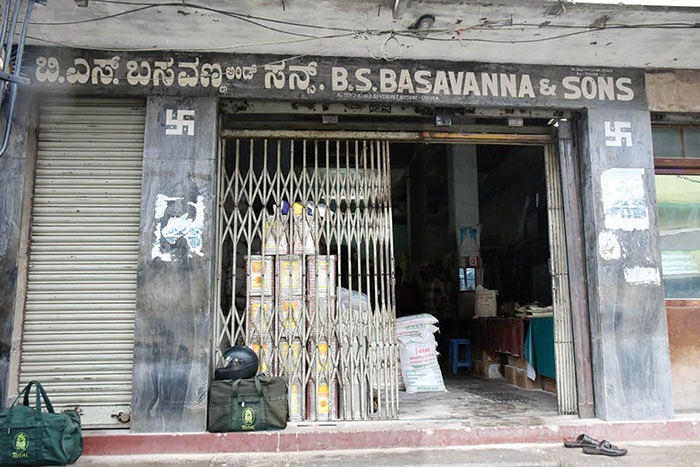
A Nostalgic Journey
For old Mysureans and for people in their late 30s and above, one visit to Santhepet takes them on a nostalgic journey as they still find some of the oldest shops functioning. Though there are only a handful, people remember visiting shops with parents to buy groceries.
Among the oldest shops are K. Nandi Basappa & Sons and B.S. Basavanna & Sons, which started in 1920 by Nandi Basappa and Bengaluru Subbanna. Both the businessmen were honoured with titles ‘Dharma Rathnakara’ and ‘Dharma Pravartha’ by the then King Jayachamaraja Wadiyar recognising their contribution to trade and commerce. Now the business is run by the family’s third and fourth generations.
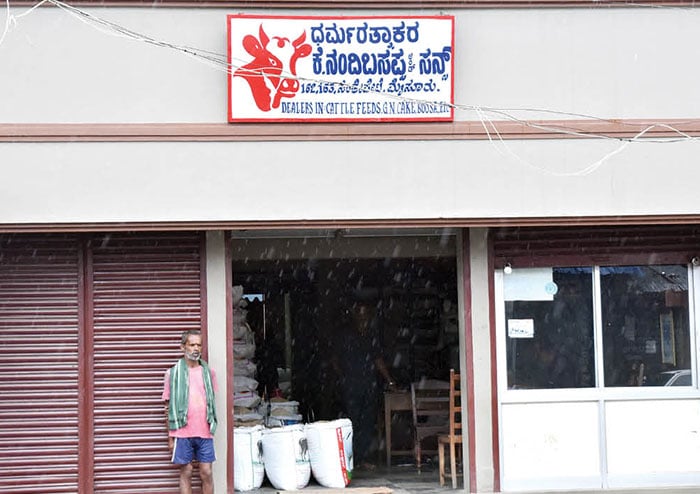
B.R. Nandish, Managing Partner of K. Nandi Basappa & Sons, said that earlier days food grains and pulses to Mysuru were procured from North India and transported to merchants through bullock carts. “While goods procured from North India were brought to old Santhepet, locally grown fruits and vegetables were sold at New Santhepet, now old RMC, at Bannimantap,” he added.
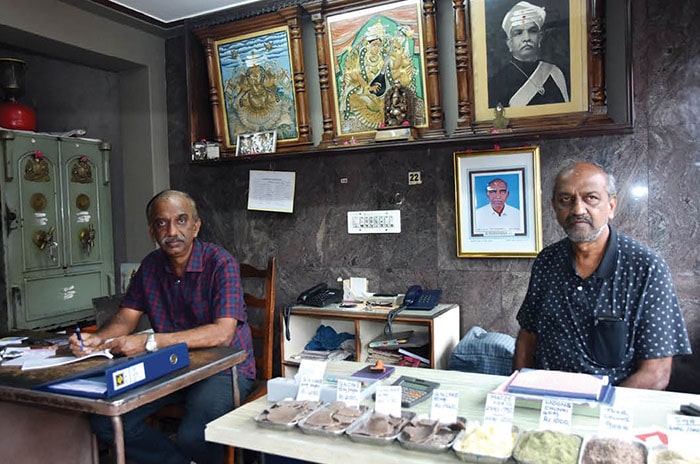
“The market has undergone a sea change over the past few years. People used to come looking for our shop. But now, things have changed. At present, online market is reaching out to customers. Fortunately, we have been successful as we have adapted to new market economics,” said Ajay Kumar, Proprietor, B.S. Basavanna & Sons.
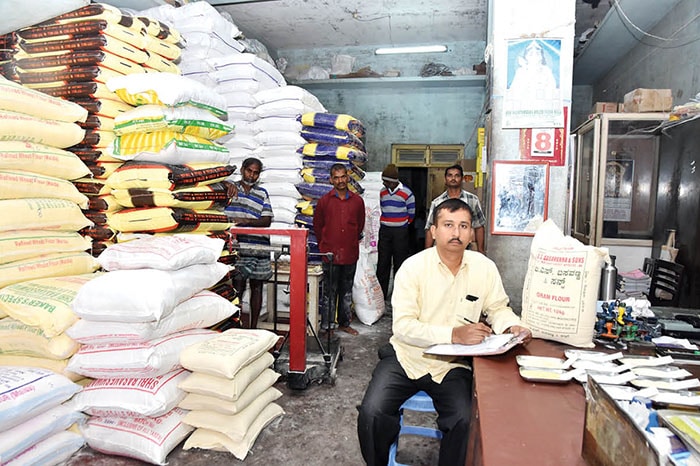
Another important businessman from Santhepet, who has contributed to Mysuru’s development, is Dharma Rathnakara Banumaiah. He was bestowed the title ‘Dharma Rathnakara’ by the then Maharaja of Mysore recognising his contribution to education. D. Banumaiah’s Educational Institution was founded as a Trust in 1919 by Rao Bahadur Sahukar D. Banumaiah to provide education to poor children. Though born to a poor family, Banumaiah grew up to become a successful businessman.
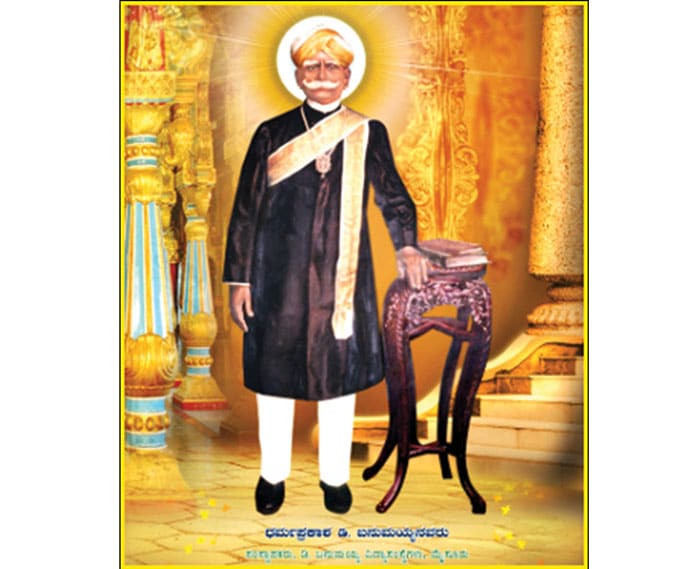
When a canal transforms into a market
History of Santhepet dates back to 1799 when the reign of Mysore Kingdom returned to Wadiyars from Tipu Sultan. The Old Fort that was demolished by Tipu was reconstructed in 1802. The Fort housed an entire township with 8,000 families inside.
The township had separate streets that sold flowers, vegetables, fruits, utensils, clothes and gold jewels. At this point of time the then Dewan of Mysore Poornaiah, in an effort to bring River Cauvery water to Mysuru, gets a canal constructed from Anandur, now in Srirangapatna Taluk. This canal is the present ‘Poornaiah Naale’ or ‘Poornaiah Canal.’
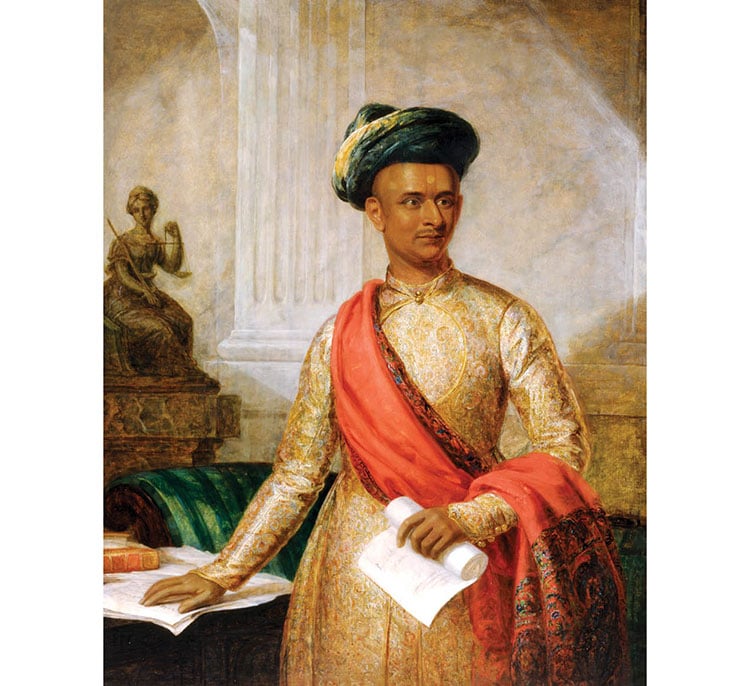
Since Mysuru is on a higher altitude than River Cauvery water level, the canal reached a depth of 70 feet by the time digging work reached Dufferin Clock Tower near K.R. Circle. Later it was decided to stop digging as it would not serve any purpose and would harm the township. However, water had already reached Dufferin Tower. Though it did not serve its actual purpose, it helped the vendors, who came to the Fort from surrounding villages with vegetables and goods, in their morning ablutions.
Farmers, who cultivated vegetables, fruits, flowers, cereals and pulses in surrounding areas used bullock carts to transport goods to Mysore Fort Township. They arrived early in the morning when the doors of the township were closed. As such they had to wait outside till sunrise.
The villagers used to dump all their goods near the canal and wait. Over the years, though the supply of water to the canal was stopped, people continued to dump goods there. The place later transformed into a temporary market.
A single row of shops
During the reign of Chamarajendra Wadiyar, merchants of Vyshya community constructed a single row of shops at the place where the Devaraja Market now exists. Later, Jayachamaraja Wadiyar constructed another wing of Devaraja Market towards Boti Bazaar. Subsequently, the canal was closed and half of the canal became Devaraja Market and the rest was added to the now existing Sayyaji Rao Road.
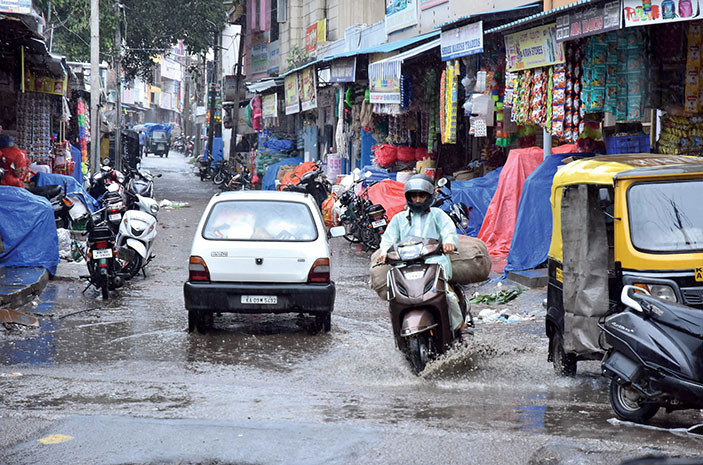
During Mummadi Krishnaraja Wadiyar’s rule, the market was started in the then ‘Doddabeedi’; now Ashoka Road. Later, during the rule of Chamarajendra Wadiyar X, Doddabeedi became Doddapete and Santhepete functioned from Devaraja Market to the present D. Banumaiah College.
At this point of time, various Agraharas were formed around the Mysore Fort and the town started to expand further. People, who started to live in new areas, visited the already existing market near the Mysore Fort. Gradually, merchants started selling rice, ragi and other cereals on footpaths. The place slowly became a wholesale market with permanent shops.
It was Chamarajendra Wadiyar X, who helped development of the market by constructing shops and giving them away to merchants. Later, Nalwadi Krishnaraja Wadiyar set up permanent shops in Santhepet.
Royal Loyal
Most of the merchants, who had shops at Santhepet, were connected to the Palace as they supplied groceries to the Royal Family. Even today, they have retained their loyalty to the royals. Some merchants, who were rich, contributed to the development of Mysore and also patronised art and culture.
With the population of Mysore increasing drastically, Jayachamaraja Wadiyar conceptualised the construction of one more market — New Santhepet. Later, it came to be known as RMC Market. At that time the new Santhepet which started from the now Old RMC Circle (near Muslim Co-operative Bank) extended up to Maulana Abul Kalam Azad Circle (Highway Circle).
Being the parallel road of Sayyaji Road, Santhepet was always buzzing with activities. While the Old Santhepet near Jaganmohan Palace catered to the daily needs of residents, the New Santhepet mostly was used to sell the locally grown flowers and vegetables. However, the wholesale market at Old Santhepet was shifted to Bandipalya during 2002 after new shops were constructed and allotted to merchants.
The Guardian Angel of Old Santhepet
One of the oldest structures located in Old Santhepet is the Prasanna Nanjundeshwara Temple. The temple was reconstructed by the Wadiyars and is believed to be renovated by Mummadi Krishnaraja Wadiyar.
According to priests, the temple was called ‘Gejje Pooje Temple’ as it was frequently visited by Devadasis. Later, the temple was renovated by devotees. The annual Brahmarathotsava or the Car Festival is held on the full moon of Holi.
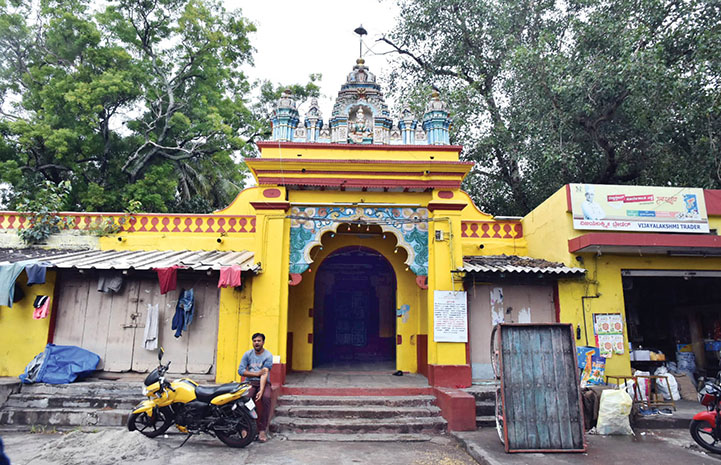
The temple attracts a lot of devotees on Maha Shivaratri when people residing near Old Santhepet and surrounding Agraharas seek blessings.
The temple premises, spread across 2.5-acre land, is home for other temples dedicated to Lord Ganapathi, Goddess Chamundeshwari, Tanka Rama Mandira, Lakshminarayana Swamy, Dakshinamurthy, Subramanyeshwara, Chandikeshwara and Goddess Parvathi. The premise also has a Navagraha temple and a Peepal Tree that is believed to be 300 years old.



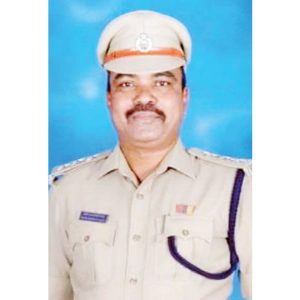

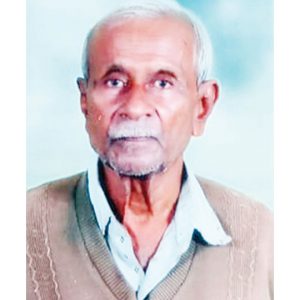

Thanks for publishing such a great historical article.
Would be wonderful to here such historical events and data published from Star of Mysore, from same or similar authors. YOU ARE INDEED A STAR OF MYSORE.
Very few people of the day, know much about Mysore.
To educate them and appreciate the culture and achievements of Mysore and as well even North Karnataka is very deeply appreciated.
None of the youngsters of Mysore and a large hugely migrated population (who have taken over Santepete and Devaraja Urs Road) have no understanding of our history and appreciation for it.
@Anamika How about the migration population of Mysoreans who settle abroad in places like America,do not care for the history of the settle they settle in, interested only in the quest of Dollars? Whilst you blame the immigrants coming to Mysuru, you need also to blame the immigrants-the Mysoreans not interested in the history of the American cities they settle in. Pretty pathetic indeed!
Interesting history of Santhepets: the Old and the New.
There was another facet to Santhepet-the rich merchants they, ho used their cash for their own ends. For example, in those days: in 1950s and 1960s,the overweight Santhepet merchants suffering from multiple illnesses ( due to their sedentary life style of sitting near their cash tills and safes, interested in making money and not taking as simple an exercise as a walk), kept busy the specialists in medicine at the K R hospital-who were trained in England mostly, through their private consultations that left very little time for these specialists-the government doctors collecting non-practicing allowance, just not to do so, to care for ordinary poor patients visiting the outpatient clinics, leaving them to the care of junior doctors. The privarewars in that hospital was filled with them-in those days,there were no private hospitals or clinics, apart from the Mission Hospital, which was not as best equipped as the K R Hospital-the teaching hospital linked to the only medical college then.
These medical specialists after a service of 3 years or so in hospitals like the K R Hospital were on mandatory transfers to ensure that they do not entrench in a position which can lead to corruption, nepotism etc… Bank managers had similar transfer policy. These Santhepet merchants’ money talked transcending that transfer policy. If a specialist physician at the KR Hospital with whom they had private consultations received the transfer order or a bank manager in their branch likewise received a transfer order, these orders were quietly cancelled within days, thanks to the effort of these Santhepet merchants. These specialists and bank manager thus continued giving their exclusive attention these rich Santhepet merchants!
Two anecdotes here to give a glimpse of what these rich Santhepet merchants could do. 1.One top specialist in medicine at the K R Hospital was able to build a massive mansion in Yadvagiri, which his mere salary did not allow him to do so, but yet his mansion came up fast. He was then so sure of his long years of stay at the K R Hospital where he had built a rich clientele of these Santhepet merchants. The story narrated by juniors of the specialist at first, which then became an open secret. 2. A Bank manager of a prominent national branch in the vicinity of Santhepet, discovered suddenly one day, that a cash of 2 Lakhs was missing from his secure safe in his secure office, which he as the manager had the sole access to it. A meeting was hastily arranged with a selected bunch of rich Santhepet merchants in his office. The result the cash was replaced before the end of that bank working day!! Whispers by bank employees about this to a few friends about the mighty Santhepet merchnats. In those days,2 Lakhs was a large sum of money!
In those days too, we the not-so-well-to-do , but hard working middle and high school students, can only watch with despair, the sons of these rich Santhepet merchants, who were mostly lazy and dull, being specially feted by the head master and other teachers. We did not know at that time the extent the rich Santhepet merchants’ tentacles spread to the top middle and high schools in the city, hospital and banks!
Well, a selected set of rich Santhepet merchants were really omnipotent in those days! An essential part of Santhepet history too!!